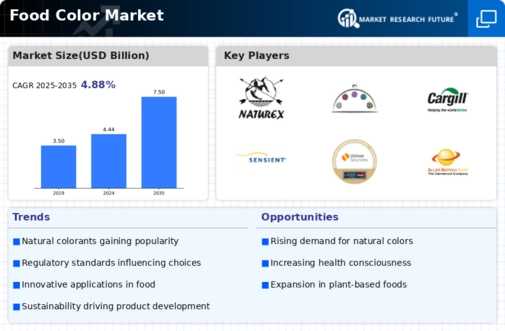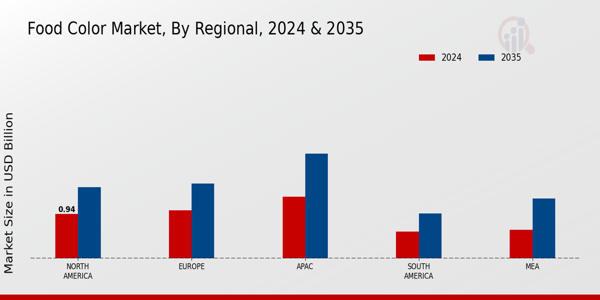Market Share
Food Color Market Share Analysis
In the competitive landscape of the food color market, companies employ various strategies to position themselves and capture market share effectively. One key strategy is differentiation through product innovation and diversification. With consumers increasingly seeking natural and clean-label ingredients, companies focus on developing food colors derived from natural sources such as fruits, vegetables, and plants. These natural colors not only meet consumer demand for healthier alternatives but also offer vibrant and appealing shades for a wide range of food and beverage applications. By offering a diverse portfolio of natural colors with superior performance and stability, companies can differentiate themselves in the market and attract customers, thus increasing their market share.
Furthermore, building a strong brand reputation and trust is crucial for gaining market share in the food color segment. Companies invest in building their brand image by emphasizing factors such as product quality, safety, and reliability. This involves rigorous quality control measures, compliance with regulatory standards, and transparent communication about sourcing and production practices. By establishing themselves as trusted and reputable brands, companies can secure customer loyalty and preference, leading to a larger market share over time.
Moreover, effective marketing and promotional strategies play a vital role in driving visibility and sales in the food color market. Companies leverage various marketing channels such as digital advertising, social media, and influencer partnerships to reach their target audience and communicate the benefits of their products. They highlight factors such as versatility, ease of use, and the ability to achieve vibrant colors naturally to appeal to food manufacturers and consumers alike. Additionally, offering educational content, recipes, and usage tips can help consumers understand the value proposition of different food colors and encourage trial and adoption.
Strategic partnerships and collaborations also contribute to market share positioning in the food color segment. Companies form alliances with food manufacturers, distributors, and retailers to ensure widespread availability of their products across various channels. Collaborating with foodservice providers and chefs to showcase the versatility and performance of their colors in professional kitchens can further drive adoption and preference among consumers. By leveraging the strengths and networks of their partners, companies can extend their market reach and capture additional market share in both retail and foodservice sectors.
Furthermore, continuous investment in research and development is essential for driving innovation and maintaining a competitive edge in the food color market. Companies allocate resources to develop new formulations, improve color stability, and enhance the sensory attributes of their products. This includes investing in technology and scientific research to explore novel ingredients, processing techniques, and applications for food colors. By offering superior products that meet the evolving needs and preferences of consumers, companies can strengthen their market position and gain a competitive advantage in the dynamic and rapidly evolving food color market.














Leave a Comment